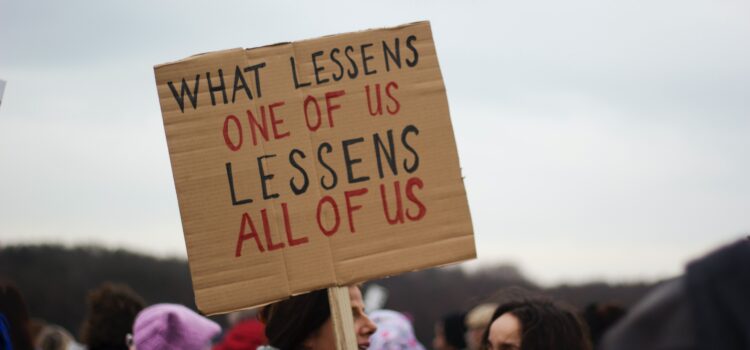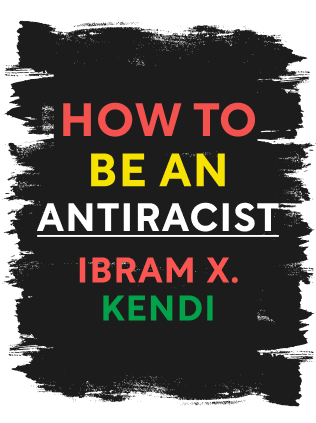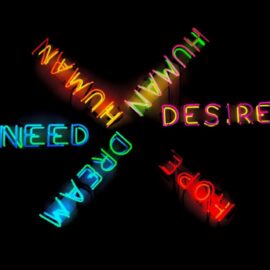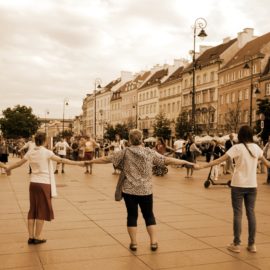

This article is an excerpt from the Shortform book guide to "How to Be an Antiracist" by tIbram X. Kendi. Shortform has the world's best summaries and analyses of books you should be reading.
Like this article? Sign up for a free trial here .
Do you need an antiracism guide? What are the key terms you need to know for your goal of becoming an antiracist?
This antiracism guide provides key terms related to racism and antiracism. In How to Be an Antiracist, understanding these terms is foundational to antiracism.
Keep reading for the antiracism guide to key terms.
Antiracism Guide: Key Terms
An important principle of antiracism is to clearly define words related to racism. This antiracism guide will also offer examples to contextualize the definitions. Definitions are important for two reasons:
- They allow us to accurately describe the world and its principles.
- They force us to be honest. If definitions are flexible, people can spin and manipulate words to present themselves in a better light or silence conversations.
- For example, the word “racist” has acquired so many negative connotations that it’s become so offensive people are afraid to use it, and anyone who’s accused of being racist denies it. This results in people not speaking up about racism. In reality, words like “racist” and “racism” aren’t pejoratives—they’re descriptive terms that are necessary for identifying and, subsequently, dismantling racism.
How to Be an Antiracist uses the following definitions for its antiracism guide:
A race, or racial group, is a hierarchical category into which people are sorted. These categories aren’t based on culture, biology, or ethnicity—they were invented by historical powers in order to gain power over groups of people. There are six races in the US: Latinx, Asian, African, European, Indigenous, and Middle Eastern.
A race maker is a person who creates racial groups and subgroups.
- (Shortform example: An example of a race maker is Johann Friedrich Blumenbach, who divided humans into five races based on what their skulls looked like.)
Racial is an adjective that means related to race. It doesn’t imply any hierarchy or superiority.
A racial inequity is an unjust imbalance between racial groups. It’s important to understand that racial inequities are caused by policies, not people within races.
- Example #1: In 2014, 71% of White families lived in homes they owned while only 45% of Latinx and 41% of black families owned their homes. Black and Latinx families are not inherently less deserving or less capable of homeownership than White families—rather, the imbalance is caused by a series of policies (some of which are discussed in later chapters).
- Example #2: White people live 3.5 years longer than Black people in the US, and twice as many Black infants die as White ones. Again, this is not because Black people are inherently less healthy and robust than White people. It’s because a series of policies have resulted in fewer resources and higher health risks in Black communities.
Antiracism Guide: People, Their Ideas, and Their Behaviors
Racist, as a noun, refers to a person who believes that some races are inferior to others and who supports racist policies, whether by creating them or by not working to dismantle them. “Racist” is a descriptive term, not a permanent identity—people can make both racist and antiracist decisions throughout their lives.
- For example, White supremacists are racists—they believe that White people are superior to all other groups and they vote for politicians who will enact racist policies.
A racist idea is an idea that implies one racial group is better or worse than another.
- An example of a racist idea is believing that Black people aren’t as studious as White people.
Antiracist, as a noun, refers to a person who believes that all races are equal and who supports antiracist policies. It’s also a descriptive term, not a permanent identity.
- For example, Ibram is an antiracist—he believes that all races are equal, and he founded the Antiracist Research and Policy Center to work towards dismantling racist policies.
An antiracist idea is an idea that implies all racial groups are equal.
- An example of an antiracist idea is believing that there are no differences in studiousness between Black and White people.
A microaggression is the constant, daily abuse that White people subject people of color to. Most White people aren’t aware they’re committing microaggressions. While the term “microaggression” is widely used, Ibram doesn’t use it because “micro” implies that daily abuse is minor, which it isn’t, and “aggression” is vague. He prefers the term “racist abuse.”
- An example of microaggression or racist abuse is a White woman clutching her possessions to herself when a Black person sits next to her.
Macroaggression is large-scale abuse directed at people of color.
- An example of microaggression is violence.
Racism and Antiracism: Policies
A racist policy is any law, procedure, process, guideline, or rule, written or unwritten, that causes or maintains racial inequity. “Systemic racism,” “structural racism,” and “institutional racism” are synonyms, but Ibram prefers to use “racist policy” because it’s more straightforward and concrete.
- Example #1: Some of Nixon’s fiercest criticism came from Black people and antiwar critics, so he created a policy to attack them. The policy allowed law enforcement to raid their homes and meetings in search of drugs.
- Example #2: Ohio required newly registered voters in the 2004 federal election to submit their voter-registration forms on a particular kind of expensive paper, which made it harder to register. The policy appeared to target all newly registered voters, irrespective of race, but a large percentage of newly registered voters were Black, meaning the policy caused racial inequity.
An antiracist policy is any law, procedure, process, guideline, or rule, written or unwritten, that causes or maintains racial equity.
- (Shortform example: The 1965 Voting Rights Act made it illegal to prevent people from voting based on their race.)
Racial discrimination is treating a group of people in a particular way based on their race. Racial discrimination is only racist when it creates inequity.
- An example of racial discrimination is a policy that temporarily helps an underrepresented group. While related to race, this policy isn’t racist because it aims to create equity between groups.
Racism is a combination of racist policies and ideas that causes and maintains racial inequities.
- An example of racism is the combination of policies that resulted in Black and Latinx people making up 56% of the prison population in 2016 even though they represent only around 25% of the US population. White people make up 30% of the prison population and 60% of the US population.
Antiracism is a collection of antiracist policies and ideas that cause racial equality.
- An example of antiracism is the combination of the Immigration and Nationality Act (1965), the Refugee Act (1980), and the Immigration Act (1900) that encouraged immigration to the US from non-European countries. Examples like this help bring the antiracism guide to life.

———End of Preview———
Like what you just read? Read the rest of the world's best book summary and analysis of Ibram X. Kendi's "How to Be an Antiracist" at Shortform .
Here's what you'll find in our full How to Be an Antiracist summary :
- What racism is and how it evolved
- How you might have subtle racist thoughts and not even be aware of them
- Why being "not racist" isn't good enough






